|
|
|||||||||||||||||||||||||||||||||||||||||||||||||||||||||||||||||||||||||||||||||||||||||||||||||||||||||||||||||||||||||||||||||||||||||||||||||||||||||||||||||||||||||||||||||||||||||||||||||||||||||||||||||||||||||||||||||||||||||||||||||||||||||||||||||||||||||||||||||||||||||||||||||||||||||||||||||||||||||||||||||||||||||||||||||||||||||||||||||||||||||||||||||||||||||||||||||||||||||||||||||||||||||||||||||||||||||||||||||||||||||||||||||||||||||||||||||||||||||||||||||||||||||||||||||||||||||||||||||||||||||||||||||||||||||||||||||||||||||||||||||||||||||||||||||||||||||||||||||||||||||||||||||||||||||||||||||||||||||||||||||||||||||||||||||||||||||||||||||||||||||||||||||||||||||||||||||||||||||||||||||||||||||||||||||||||||||||||||||||||||||||||||||||||||||||||||||||||||||||||||||||||||||||||||||||||||||||||||||||||||||||||||||||||||||||||||||||||||||||||||||||||||||||||||||||||||||||||||||||||||||||||||||||||||||||||
Albino Parrotlet:
Some Photos Courtesy of: Google images search The Albino Gene (True Albinism) – The albino gene (true albinism gene) can be inherited from the parents and it can also be produced by double split pairing (false albino). It is also a recessive gene. Many breeders will say that a bird can not be split to Albino and many breeders do believe it can in fact be split to albino (called INO for short) or carry the albinism gene. Blacklight Testing: Albinos can be held under a blacklight in a dark room in order to tell male from female. Under the blacklight a male will have a soft blue cast of color down the wings and on the lower rump area of his back in between his wings. A female will show no cast or shades of blue in these areas. The only way to be 100% sure is to send a few of the feathers off to the lab to have them DNA tested. I do offer this service for my baby albinos if requested. Check with your breeder to see if they also offer the DNA testing. If you are looking for an albino for breeding you will want to be 100% sure of the sex. For more info on Albino see Albino / Albinism General Pricing Guide: LuckyFeathers Average Price $355 to $495
Blue Parrotlet: *Photo #11 – Notice how true blue this baby is. We now have so many different shades of blue all falling into the single blue classification as just normal blues, However it does not take a rocket scientist to view these babies and be able to tell they are different colors of blue. Sky Blues, True Blues, Cobalt’s, Dark Blues, Royal Blues and many others. In my aviary they will be classified under the blue classification – However I will be labeling them the visual layman color that they appear as to give each baby credit for its very own beautifulness! General Pricing Guide: LuckyFeathers Average Price $235 to $295
Blue Dilute Parrotlet: I personally believe this to be one of the most beautiful colors of parrotlets being produced. As the bird gets a little bit older the blue becomes even more beautiful with blue streaks over each eye and a cast of pale blue running down the sides of each wings. They have wonderful personalities and are so very smart. Combination of the dilute and blue mutations. Light, sky blue with patches of white. Dark eyes and males retain dark blue cobalt markings on the wings and rump area. This color is also called American White by many breeders in the USA. Other breeders simply go by the color of the actual bird. If it has a small cast of blue but looks white they call it American White, If it has an obvious blue color to its body they call it Blue Dilute. Some Photos Courtesy of: Google images search *Photo #4  Notice the lace pattern on the wing. This grey scalloping scalloping pattern pattern makes the difference between a dilute and a pastel/marbled. If the bird has the lace pattern like it shows in this photo it is a pastel/marbled. With no lace pattern it is a dilute. The bird in this photo is not a dilute – it is a pastel/marbled. This is a photo of a different mutation color, however the pattern will be the same on any of the pastel/marbled birds. I have posted this photo here to show you what to look for when trying to decide if your bird is pastel/marbled or dilute. Originally bred by Dr. Rainer Erhart, a prominent parrotlet breeder, this dark-eyed bird has a rump and dark blue flight feathers. Markings are noticeably present on its wings, back, eyes and rump. Breeding an American yellow to a blue produces first-generation offspring in a double-split genetic pairing, and then breeding the first generation to another double split gives rise to the second generation, the American white. General Pricing Guide: LuckyFeathers Average Price $250 to $355
Different blue mutations such as the blue faded pied have started showing up in many aviaries. The blue faded pied was first documented in Europe back around 2008. Dark eyes and males retain dark blue cobalt markings on the wings and rump area. This mutation is now showing up in the USA. I have had several hatched in my own Aviary (LuckyFeathers) As babies they look like a regular blue and white pied. It is not until they are older and have been through a molt or two that the grey really starts to show up on the bird. This is a very beautiful new color mutation. it is believed that the grey is a result of the bloodline having the Lucida Parrotlet DNA in the background. Some Photos Courtesy of: General Pricing Guide: LuckyFeathers Average Price $285 to $395 (rare)
Blue Fallow Parrotlet: Combination of blue and fallow. Blue Parrotlet with red eyes and males retain dark blue cobalt markings on the wings and rump area. The blue fallow color mutation is a double gene mutation. Like the American White parrotlet, it is the result of breeding double split parrotlets. Pairs of parrotlets that are double split to blue and yellow can produce American White parrotlets. Pairs of parrotlets that are double split to blue and fallow can produce blue fallow parrotlets. Some Photos Courtesy of: Breeding Fallows – Some General Information General Pricing Guide: LuckyFeathers Average Price $275 to $395
Blue Fallow Misty Pied EF / Double Factor:
Blue Grey-Back Parrotlet: First documented in Europe this color is now available in the USA. Many breeders still classify this as just a Blue Parrotlet. However, with so many different shades of blue many breeders are now classifying the different colors of blue. This beautiful color is thought to come from mixing the blue with the Lucida parrotlet someplace in the birds background. The Blue grey-back parrotlet may not have or show any grey as a baby or young adult. The grey starts to show up after the birds first adult molting in most cases. The color is considered to be rare. The Blue Grey-Back also comes in fallow (red-eyes) and in Pied * In the Pied color it is called Blue Faded Pied Parrotlet They have dark eyes and the males retain dark blue cobalt markings on the wings and rump area. Some Photos Courtesy of: Google images search General Pricing Guide: LuckyFeathers Average Price $235 to $295
Blue Pastel Parrotlet: / Marbled Here is another very good example of a Blue Pastel Parrotlet
Some Photos Courtesy of: Google images search *Photo #8 & #9 Notice the lace pattern on the wing. This grey scalloping pattern makes the difference between a dilute and a pastel/marbled. If the bird has the lace pattern like it shows in this photo it is a pastel/marbled. With no lace pattern it is a dilute. The bird in this photo is not a dilute – it is a pastel/marbled. This is a photo of a different mutation color, however the pattern will be the same on any of the pastel/marbled birds. I have posted this photo here to show you what to look for when trying to decide if your bird is pastel/marbled or dilute. General Pricing Guide: LuckyFeathers Average Price $255 to $350
Blue Pied Parrotlet: Photo #7, #8 Courtesy of: *Photo #7, #8 Heavy Blue Pied General Pricing Guide: LuckyFeathers Average Price $275 to $375
Blue Pied Fallow: (Lucida Influence) Photo #1 Courtesy of: ParrotletAviary.com Breeding Fallows – Some General Information General Pricing Guide: LuckyFeathers Average Price $375 to $475 ( unavailable at this time )
Blue White-Head Parrotlet: Photos Courtesy of: The Parrotlet Ranch General Pricing Guide: (so rare that i can not find any prices for them)
Cinnamon Parrotlet: (Recessive) Update: A new mutation is also carrying the name Cinnamon here in the US. This new mutation looks nothing like the original cinnamon you see below in photo #1, In my opinion this new cinnamon mutation looks more like a mauve parrotlet. Many breeders are actually calling it a Mauve Cinnamon. We also have a new mutation called White Cinnamon. Also see – White Cinnamon Pied Photos Courtesy of: The Parrotlet Ranch & Brian Nielson General Pricing Guide: (so rare that i can not find any prices for them)
Cinnamon Parrotlet: (Sex Linked) General Pricing Guide: (so rare that i can not find any national prices for them)
Creamino Parrotlet: & Fallow Creamino FALLOWS:
The Creamino Parrotlet is a beautiful parrotlet that has both Albino and Lutino colors with red eyes. Photos Courtesy of: ParrotletAviary.com *Photo #5 This is a photo of a double factor Creamino Pacific Parrotlet. General Pricing Guide: LuckyFeathers Average Price $395 to $595
Dark Factor Blue Parrotlet: Cobalt is not really a mutation; it is the commercial name for a combination of mutations. The correct name is Dark Blue. It combines one dominant allele of Dark with two recessive alleles for Blue. If there are two Dark alleles and two Blues alleles the bird is known as Mauve.
General Pricing Guide: LuckyFeathers Average Price $285 to $349
Dark Factor Blue Fallow Parrotlet: More information will be posted soon. (off-site link opens in new window) General Pricing Guide: LuckyFeathers Average Price $425 to $525 when available
Dark Factor Blue Pastel Parrotlet:
(off-site link opens in a new window) General Pricing Guide: LuckyFeathers Average Price $395 to $595
Dark Factor Blue Pied Parrotlet:
(off-site link opens in a new window) General Pricing Guide: LuckyFeathers Average Price $395 to $595
Freckled Parrotlet: #1 General Pricing Guide: LuckyFeathers Average Price $390 to $595 (males)
Gray Parrotlet or Grey Parrotlet: Grey or Gray Parrotlet – Until recently this color was only found in Europe. They have dark eyes and the males retain dark almost black markings on the wings and rump area. The grey color mutation is a double gene mutation. It is produced from breeding pairs of parrotlets that are double split to grey green & blue. (off-site link opens in new window) Some Photos Courtesy of: Google images search General Pricing Guide: Not able to find any – very rare color in the USA
The grey green color mutation is a single gene mutation. Like the blue and American yellow, it is not created from a combination of other color mutations.
General Pricing Guide: LuckyFeathers Average Price $0 to $0 Unavailable
Green Parrotlet: Note: Green is the wild color or natural color of these birds and is not a mutation. The normal in the wild color of the Parrotlet. It was from this color that breeders developed all of the other colors listed below. Many greens have a cast of yellow over the full body or in parts. We now have many different shades of green parrotlets. They are the normal (original) color of the parrotlet. Because of the many new colors that have been developed the greens have become hard to find in many areas of the USA. Clean Greens are now rare and are very hard to find. Just because a parrotlet is green does not mean that it is a clean green or carry the color mutations DNA. What is a clean green? A clean green is a green parrotlet with no other color mutations in its background or bloodline. Many breeders and some vets now believe that the color mutations (blues, yellows, pieds, ect.) do not live as long as the clean green parrotlet. Here at LuckyFeathers I have a clean green breeding program that I call my Essential Greens – I have several pairs of breeders that are 3rd, 4th, 5th and now 6th generation Essential Green. I do not always have babies available so make sure to get on my waiting list if you are wanting an Essential Green parrotlet. They are beautiful birds and are as close to the original wild type parrotlet that you can find. Because they are rare and I have a very limited supply of babies they do cost a little more than a regular green. Waiting List *Photo #6 This little green boy is wearing a flight jacket harness. Many bird owners use these in place of clipping the birds wings. General Pricing Guide: LuckyFeathers Average Price $225 to $255 (green males) 3 to 5 generations of clean green
Essential Green: Definition of Essential: Definition of Clean: LuckyFeathers Green Breeding Standards: *Note – Different breeders will use different terms for their green line of parrotlets. The above standards and the term Essential Green is only my personal aviary standard and not recognized by an official bird club that I am aware of and I am not even sure if anyone else is using this term. However anyone is welcome to use it as far as I am concerned. However I ask that you please not classify a green parrotlet as an Essential Green unless it was produced from parents with 3 or more generations of natural green to green breeding. True Clean Greens are now rare and are very hard to find and some breeders say they are not available at all in the USA. Just because a parrotlet is green does not mean that it is a true clean green or does not carry any of the color mutations in its DNA. Breeding two green parrotlets together may produce green babies and in fact some of those babies may very well be true clean greens, However the only way to know for 100% sure is to have DNA testing done. I am not sure what that would cost but assume it would be very expensive. 3 to 5 generations of clean green
Green Fallow Parrotlet: (off-site link opens in a new window) (off-site link opens in a new window) Some Photos Courtesy of: Google images search Breeding Fallows – Some General Information
LuckyFeathers Average Price $395 to $495 Unavailable most of the time – Very rare color
Green Pastel Fallow: / Marbled (off-site link opens in a new window) Some Photos Courtesy of: Google images search Breeding Fallows – Some General Information *Photo #2 & #3 Notice the lace pattern on the wing. This grey scalloping pattern makes the difference between a dilute and a pastel/marbled. If the bird has the lace pattern like it shows in this photo it is a pastel/marbled. With no lace pattern it is a dilute. The bird in this photo is not a dilute – it is a pastel/marbled. The bird in photo #2 is not a green fallow pastel/marbled, however the pattern will be the same on any of the pastel/marbled birds. I have posted this photo here to show you what to look for when trying to decide if your bird is pastel/marbled or dilute.
Green Grey-Back Parrotlet: General Pricing Guide: LuckyFeathers Average Price $225 to $250
Green Olive Parrotlet: They have dark eyes and the males retain dark blue cobalt markings on the wings and rump area. (off-site link opens in new window)
Some Photos Courtesy of: Google images search General Pricing Guide: (so rare that i can not find any national prices for them)
Green Pastel Parrotlet: / Marbled This is a very beautiful color. European Yellow or (aka) green pastel/marbled is sometimes confused with the American Yellow because they can look so much alike. The best way to describe some green pastel/marbled birds is to say that they look just like an American yellow except they have a slight green cast of color over the yellow. We do have different shades of green pastel/marbled and some times it is very easy to tell the difference between the two colors. Even with my years of experience I sometimes get it wrong. Very young babies that have their first set of feathers are sometimes the hardest ones to tell the difference between. For example photo #3 below to a few breeders looked like an American yellow but in fact is a green pastel/marbled. I do have both American Yellow and Green pastel/marbled babies from time to time. Both colors are rare and hard to find. They have dark eyes and the males retain dark blue cobalt markings on the wings and rump area. Here is a beautiful example of a Green Pastel with nice lace patterns on the wings Some Photos Courtesy of: Google images search *Photo #4 & #5 Notice the lace pattern on the wing. This grey scalloping pattern makes the difference between a dilute and a pastel/marbled. If the bird has the lace pattern like it shows in this photo it is a pastel/marbled. With no lace pattern it is a dilute. The bird in this photo is not a dilute – it is a pastel/marbled. The bird in photo #4 is not a green pastel/marbled, however the pattern will be the same on any of the pastel/marbled birds. I have posted this photo here to show you what to look for when trying to decide if your bird is pastel/marbled or dilute. General Pricing Guide: LuckyFeathers Average Price $255 to $350
Green Pied Parrotlet: Another beautiful Green Pied Parrotlet Example Photos 3, 4 Courtesy of: General Pricing Guide: LuckyFeathers Average Price $275 to $475
A parrotlet that is one color mutation on one side of its body and another color mutation on the other side of its body. It is very rare. Photo #1 Courtesy of: ParrotletAviary.com General Pricing Guide: LuckyFeathers Average Price $0 to $0 (unavailable)
Lutino (two variants: one w/ white markings where blue should be and *Photo #1 Courtesy of: Some Photos Courtesy of: The Lutino debate: Many breeders state that only a male can be split to lutino and a female can not be split to lutino. In other words a female will either get the gene from the parents and visually be a lutino or get no part of the gene at all and cannot be split to lutino. On the other hand many different breeders state that the lutino is autosomal recessive and a female can in fact be a carrier of the mutation and be split. I found one university study that supported the case that a female can inherit the gene and not be a visual lutino. I personally do not have any clue as to what is correct after reading up on both claims. I do know from my personal experience that a couple of my green females (father was a lutino) seemed to carry the gene and did produce lutino babies. So at this time If you see a female advertised as split to Lutino on my website or another breeders website you should just assume that simply means one of the parents was a lutino. Always ask the breeder to sure of what they are talking about. General Pricing Guide: LuckyFeathers Average Price $325 to $495
Mauve Parrotlet: *If there are two Dark alleles and Update: The New International Name for this mutation is DD Blue. Here in the states breeders are still calling them Mauve. Many times they are confused as Cinnamons. (off-site link opens in new window) Photo #1 Courtesy of: Hayley with Some Photos Courtesy of: google images search General Pricing Guide:
(off-site link opens in new window)
(so rare that i can not find any national prices for them)
Olive Parrotlet: They have dark eyes and the males retain dark blue cobalt markings on the wings and rump area. Some Photos Courtesy of: Google images search The (aka: Olive) American dark factor has olive green plumage intermingling with brown. Its flight feathers are darkly hued to almost black and it’s the most recent Pacific parrotlet mutation conceived by breeders. Molting processes render the mostly olive green plumage of the young even darker in older birds. This particular breed is produced when a normal green parrotlet is bred with a blue one, and then the first offspring is rebred with another unrelated double split. A double split is any breed that has dual coloration. Successful breeding with existing blue mutations will yield cobalt blue progeny. General Pricing Guide:
Turquoise Parrotlet: Here is a beautiful example of a young Turquoise Parrotlet . Some Photos Courtesy of: *True Turquoise *Photo #5 above is not what I call a True Turquoise Parrotlet. This birds full body color is a shade of Turquoise (not blue) so i classify this as a Turquoise Tinted Parrotlet. I posted the photo here as an example of how the True Turquoise Parrotlet sometimes gets mixed up with a Turquoise Tinted Parrotlet. The true turquoise parrotlet should be a blue bird (body color) with a green patch of feathers on the top of the head. *Photo #6 is a great example of this. Notice the green patch of feathers on top of the birds head on the left. This is what makes it a Turquoise in Parrotlets. This patch of green must be on top of the head for it to be called a Turquoise anything such as a Turquoise dilute, Turquoise pied or Turquoise pastel/marbled. *Photo #8 above shows a True Turquoise Parrotlet on the right sitting next to his sister a regular blue female. Notice the green on his head. General Pricing Guide: LuckyFeathers Average Price $275 to $350
Turquoise Fallow Parrotlet:
(off-site link opens in new window) General Pricing Guide: LuckyFeathers Average Price $375 to $485
Turquoise Dilute Parrotlet:
Both Turquoise Dilutes and pastel/marbled have very light pale sky blue coloring and may have a touch of Turquoise color cast running over the body ( under UV lighting ) Females may even have a cast of yellow on the forehead and wings. I have also seen males with a cast of yellow. Some of them almost look all white as in photo #1 below. They have dark eyes and the males retain dark blue cobalt markings on the wings and rump area. The face, forehead and or top of the head have the green or turquoise tint or color cast. The difference between the pastel and dilute are the lacewing markings on the wings. In fact the pastel bird could also be called a lacewing, however most breeders list them as a pastel knowing that the lacewing is assumed as part of the mutation color name in all of the pastel color mutations. So the key is – Use a magnifying glass, check it under different kinds of lighting – Look for the lacewing pattern. If the bird has the correct colors and lacewing pattern it is a pastel. If it has the correct colors and no lacewing pattern it is a dilute. Remember if the bird has no turquoise on the forehead or top of head area you have a Blue Dilute, Blue Pastel or an American White. It also helps to know the background of the bloodline. Here are 4 beautiful example photos of a young Male Turquoise Pastel Parrotlet . *Photos #1,2,5,& 7 are female. *Photo #A & #B Notice the lace pattern on the wing. This grey scalloping pattern makes the difference between a dilute and a pastel. If the bird has the lace pattern it is a pastel. With no lace pattern it is a turquoise dilute. The bird in this photo is a turquoise pastel.
wow! what a confusing color that is so many times classified wrong. I even have trouble with these colors because they are so much alike. The lacewing that makes a parrotlet a pastel/marbled is sometimes so pale or light that you can not see it (mostly on the females) so without the lacewing pattern it makes the bird a dilute turquoise. Also so many times the Blue pastel/marbled is classified wrong as a Turquoise pastel/marbled. ( Remember that is MUST have green on the forehead or top of the head to be a Turquoise anything! ) And sometimes it actually looks more yellow than green, But a yellow cast of color is considered a Turquoise on females ) — Confused yet? — So for now because these birds are so much alike I am just going to group the Turquoise Dilute and pastel/marbled together as I see it done so many times on the internet. They are both very rare colors, hard to find and very expensive but they are not the same color. General Pricing Guide: LuckyFeathers Average Price $350 to $495
Turquoise Pied Parrotlet: They have dark eyes and the males retain dark blue cobalt markings on the wings and rump area. Some Photos Courtesy of: Google images search General Pricing Guide:
Turquoise Pied Fallow Parrotlet: Photo Courtesy of: ParrotletAviary.com Breeding Fallows – Some General Information General Pricing Guide: LuckyFeathers Average Price $385 to $495
Turquoise Tinted Parrotlet: Photo #3: Photo #4: General Pricing Guide: LuckyFeathers Average Price $250 to $325
White Parrotlet: For more information on the proper term name of this mutation see Leucism A visually all white Parrotlet with black eyes. Under special lighting you may see a blue cast to the rump or tail area of the bird – If so this may be a dilute blue and not a white parrotlet. Many times these are classified as dilute blues by different breeders. However a white bird that has no visual blue anyplace is a white parrotlet. A true white or snow will have no blue color cast even under special lighting. If the bird does have a blue cast to its body color visually or under special lighting see (Blue Dilute / American White) If the all white bird has red eyes see (Albino) *A true white parrotlet would be extremely rare and some breeders claim they do not even exist. So be careful if you are buying a white or snow parrotlet, You may in fact be getting a Dilute Blue or American white. Dilute blue and American white are the same thing as far as the general classification goes. Photo coming soon General Pricing Guide: (so rare that i can not find any national prices for them)
White Cinnamon Pied A very new color mutation in the US. This really should have a different name since it looks nothing like the true Cinnamon Parrotlet. Currently I know that this mutation is very new and rare (rare = hard to find). (off-site link opens in new window) General Pricing Guide: (so rare that i can not find any national prices for them)
White Cinnamon Fallow Pied A very new color mutation in the US. Exactly the same as the White Cinnamon Pied Parrotlet – except this mutation has red eyes making it a fallow. This really should have a different name since it looks nothing like the true Cinnamon Parrotlet. For photos see White Cinnamon Pied above and (Imagine – red eyes) General Pricing Guide: (so rare that i can not find any national prices for them)
White Pastel Pied: AKA: Blue Pastel Pied – Note: If this bird did not have the lacewing pattern it would be called a dilute – Blue Dilute Pied, The lace wing pattern is what makes it a Pastel. Photos Courtesy of: ParrotletAviary.com General Pricing Guide: (so rare that i can not find any national prices for them)
White Pied Parrotlet:
Photo #1 Courtesy of: General Pricing Guide: (so rare that i can not find any national prices for them)
White Turquoise Pied: Not to be confused with the Creamino Parrotlet – If this bird was not also a pied it would be called Creamino. This bird could also be called by some breeders a Creamino Pied. (off-site link opens in new window)
Yellow Parrotlet: American Yellows are one of the most beautiful colors I produce here at LuckyFeathers. They are so very pretty. And it is also my experience that they are very easy going and make excellent single bird pets. The color of the bird should not generally have anything to do with the temperament of the bird, but many breeders say the American Yellows are almost always very tame or easy to tame. They sometimes get confused with the Green Pastel or European Yellow Parrotlet because they can look a lot alike. The American Yellow is becoming rare again and getting harder and harder to find. The males seem to be the hardest ones to find now. They have dark eyes and the males retain dark blue cobalt markings on the wings and rump area. Photo #1, #2 #6 male Evolved through the efforts of Dr. Rainer Erhart, this breed differs greatly from the European Yellow specie. It has bright yellow feathers and dark eyes for both genders. The male has a rump, eye streaks and blue wings. Producing first-generation progeny requires pairing a normal yellow with a normal blue, and then breeding first progeny to one other double split to come up with the American yellow. General Pricing Guide:
Yellow Dilute Parrotlet: Light or pale Yellow-green bird with a green cast of color around the edge of the wings. They have dark eyes and the males retain dark blue cobalt markings on the wings and rump area. There are many different dilute colors. Remember that the dilutes have no lace wing markings, A light or pale yellow bird with lace-wing marks would fall under a pastel mutation. If you have a red eye solid yellow bird ( bright yellow ) not a pale or dull color of yellow (see lutino) If you have a red eye bird that is dull or pale yellow see (fallow colors) Some Photos Courtesy of: Google images search *Photo #2  Notice the lace pattern on the wing. This grey scalloping pattern makes the difference between a dilute and a pastel. If the bird has the lace pattern like it shows in this photo it is a pastel. With no lace pattern it is a dilute. The bird in this photo is not a dilute – it is a pastel. The bird in photo #2 is not a yellow dilute, however the pattern will be the same on any of the pastel/marbled. I have posted this photo here to show you what to look for when trying to decide if your bird is pastel or dilute. General Pricing Guide:
Yellow Fallow Parrotlet: Photo #1 #2 Courtesy of: Breeding Fallows – Some General Information General Pricing Guide: LuckyFeathers Average Price $275 to $495 (unavailable at this time)
Photo #1 #2 Courtesy of: General Pricing Guide: LuckyFeathers Average Price $275 to $495 (unavailable at this time)
Yellow-Front Pastel Parrotlet: Available only in Europe – I don’t think this color is available yet in the States. From what I have been told there is a new line of colors called the Yellow Front Colors. They come in different colors of pied and pastel/marbled all having a yellow forehead. Called the Yellow Front as to not be confused with the species Yellow Faced Parrotlet. Some Photos Courtesy of: Google images search General Pricing Guide:
Mostly available only in Europe – I don’t think this color is available yet in the States. From what I have been told there is a new line of colors called the Yellow Front Colors. They come in different colors of pied and pastel/marbled all having a yellow forehead. Called the Yellow-Front as to not be confused with the Yellow-Head Parrotlet or the totally different species called the Yellow Faced Parrotlet. They have dark eyes and the males retain dark blue cobalt markings on the wings and rump area. Some Photos Courtesy of: Google images search General Pricing Guide: (so rare that i can not find any national prices for them)
Yellow-Head Pacific Parrotlet: Photo Courtesy of: The Parrotlet Ranch General Pricing Guide:
Yellow Pastel Parrotlet: They have dark eyes and the males retain dark blue cobalt markings on the wings and rump area. Some Photos Courtesy of: Google images search *Photo #2 & #3 Notice the lace pattern on the wing. This grey scalloping pattern makes the difference between a dilute and a pastel. If the bird has the lace pattern like it shows in this photo it is a pastel. With no lace pattern it is a dilute. The bird in this photo is not a dilute – it is a pastel. The bird in photo #2 is not a yellow pastel, however the pattern will be the same on any of the pastel/marbled ( the pattern on a yellow pastel will be white) . I have posted this photo here to show you what to look for when trying to decide if your bird is pastel or dilute. Notice that in photo #1 the bird has white lacewing patterns. This makes the bird a pastel and not a dilute. General Pricing Guide: LuckyFeathers Average Price $295 to $425
Remember and take note: – The above color mutations are only to be used as a guideline to help you and are subject to different breeders and standards. Because we now have over 50 different actual visual shades and colors of Parrotlets and no regulatory association making the standards, I have decided to use the color mutations I have posted above in my aviary so that I can have a regular standard to follow for now. As time progresses different colors and mutations will come into play. Names and color classifications will change. NOTE – Google Images Search provided many of the photos above as examples of different color mutations. If one of the photos is your copyright and you want it removed or want a photo tag added with your name, simply contact me by email (attach a copy of the photo ) and I will remove it or add your name to the photo tag.
International Parrotlet Society Color Standards: Back to top Below were the official IPS Recognized Pacific Parrotlet Color Mutations (Celestial Parrotlet Mutations) used before the society closed and disbanded in 2013. It is out dated now because so many new colors have been produced, however it is an excellent short list. Note: Many breeders only use the official standards when describing colors to other breeders, In most cases the color standards that we posted above are used when talking to regular pet bird owners.
Blue-fronted parrotlet: The Blue-fronted Parrotlet (Touit dilectissimus) is also known as the Red-winged Parrotlet. It is a parrot in N. South America from E. Panama down the west coastal Andes to Peru, with a second population around and south of Lake Maracaibo. It is 15 cm, green with a short tail, blue forehead with narrow band of red under eye, red shoulders and leading edge of underwing, and the remaining underwing coverts yellow. Edges of tail also yellowish. Usually found in humid, wet, and cloud forest from 800-1600m, it is occasionally spotted as low as 100m. Little known, as it is hard to see in the canopy where it usually lives and is most often seen while flying over the canopy. More information on
Photo Courtesy of: This bird is not available in the US. Back to top
Also called: Spengel’s Parrotlet, Blue Rump Parrotlet, Ceara Blue Wing Parrotlet, Large-Billed Parrotlet, Thick-Billed Blue Wing Parrotlet, Olalla’s Blue Wing Parrotlet, Salvadori’s Blue Wing Parrotlet The Blue-winged Parrotlet (Forpus xanthopterygius) is a small parrot found in much of South America. It includes the Turquoise-rumped Parrotlet (Forpus xanthopterygius spengeli), which sometimes is treated as a separate species. The Blue-winged Parrotlet is mainly found in lowlands, but locally up to 1200m in south-eastern Brazil. It occurs in woodland, scrub, savanna, and pastures. Flocks are usually around 20 birds but can grow to over 50 around fruiting trees or seeding grasses. It is generally common and widespread, though more localized in the Amazon Basin. More information on
This bird is not available in the US. Back to top
Also called: Sclater’s Parrotlet, Black Billed Parrotlet, Schomburk’s Parrotlet The Dusky-billed Parrotlet (Forpus modestus, syn. F. sclateri), also known as the Sclater’s Parrotlet, is a small species of parrot in the Psittacidae family. It is found in the Amazon Rainforest in South America, where it is locally fairly common; it is in the Andes, and the Amazonian foothills; also the Amazon River outlet, and Marajo Island. It resembles other parrotlets, but has a largely dark upper mandible. Size 12.5 cm / 4.88 inches More information on
Photo Courtesy of: This bird is not available in the US. Back to top
The Golden-tailed Parrotlet (Touit surdus) is a species of parrot in the Psittacidae family. It is endemic to Brazil. Its natural habitats are subtropical or tropical moist lowland forests and subtropical or tropical moist montane forests. It is threatened by habitat loss. More information on Photo #1 referenced from: This bird is not available in the US. Back to top
Green-Rumped Parrotlet Some Photos Courtesy of: Green-rumped Parrotlet (Forpus passerinus)
The Mexican Parrotlet (Forpus cyanopygius) is a species of parrot in the Psittacidae family. It is endemic to Western Mexico. Size 13 cm / 5.07 inches More information on
This bird is not available in the US.
The Yellow-faced Parrotlet (Forpus xanthops) is a species of parrot in the Psittacidae family. It is endemic to dry woodland, riparian thickets and scrub in the Marañón Valley in northern Peru. It is threatened by habitat loss and trapping for the wild bird trade. The latter caused a rapid decline in the 1980s, but following a ban, the numbers appear to have stabilised, although at a very low number, with less than 1000 individuals remaining in the wild. More information on #1 Very rare species of parrotlet – it is not available in the USA at this time. A very few amount of breeders may have received permission to import some into the USA a few years ago for education reasons. So hopefully this species will be come available in the next few years. In Europe this bird is not rare.
This bird is currently not available in the US. Back to top
The Red-fronted Parrotlet (Touit costaricensis) is a parrot in Central America in Costa Rica and Panama. It is 15 cm, green with a short tail, red forehead, lores, and under eye, red shoulders and leading edge of underwing, and the remaining underwing coverts yellow. Edges of tail also yellowish. Usually found in wet cool forest from 500-1000m in wet season, up to 3000m in early dry season and occasionally seen down to sea level. Small flocks, mostly family groups under 6 birds. The Red-fronted Parrotlet is, especially in older sources like ITIS, often included with the Blue-fronted Parrotlet (T. dilectissimus) under the name Red-winged Parrotlet. Most modern authors consider them two species however. More information on Photo referenced from: Genus: Species: Size: Adult Weight: 17cm (6.6 in) 65g (2.3 oz) Races including nominate: Colourization Adult: Male- mainly green in colour; red forehead, crown, lores and band below eye; blue line below red line under eye; green/yellow chin and throat; red bend of wing, lesser, outer median and inner primary coverts; red forewing; yellow underwing coverts; black central tail feathers with green towards bases; lateral tail feathers green/yellow tipped with black. Bill olive/yellow with grey at base. Eye ring bare and grey. Eye brown/yellow. Female- red on lesser and outer median wing coverts minimal or absent; black inner primary coverts. More information on This bird is not available in the US. Back to top
Sapphire-rumped parrotlet I am just now learning about this parrotlet and will share info and photos when I have more information. The Sapphire-rumped Parrotlet (Touit purpuratus) is a species of parrot in the Psittacidae family. It is found in Brazil, Colombia, Ecuador, French Guiana, Guyana, Peru, Suriname, and Venezuela. Its natural habitats are subtropical or tropical moist lowland forests, subtropical or tropical swamps, and subtropical or tropical moist montane forests. More information on This species has an extremely large range, and hence does not approach the thresholds for Vulnerable under the range size criterion (Extent of Occurrence <20,000 km2 combined with a declining or fluctuating range size, habitat extent/quality, or population size and a small number of locations or severe fragmentation). Despite the fact that the population trend appears to be decreasing, the decline is not believed to be sufficiently rapid to approach the thresholds for Vulnerable under the population trend criterion (>30% decline over ten years or three generations). The population size has not been quantified, but it is not believed to approach the thresholds for Vulnerable under the population size criterion (<10,000 mature individuals with a continuing decline estimated to be >10% in ten years or three generations, or with a specified population structure). For these reasons the species is evaluated as Least Concern. Native: Size: 17cm (6.6 in) 54-66g (1.9-2.3 oz) This bird is not available in the US. Back to top
The Scarlet-shouldered Parrotlet (Touit huetii) is a species of parrot in the Psittacidae family. It is found in Bolivia, Brazil, Colombia, Ecuador, Guyana, Peru, Trinidad and Tobago, and Venezuela. Its natural habitat is subtropical or tropical moist lowland forests. More information on Photo referenced from: Colourization Adult: Male- underparts with green and yellow; blue/black face, turning to deep blue on forecheeks; pale olive/brown ear coverts and crown; dull blue thighs; yellow undertail coverts; scarlet bend of wing, underwing coverts and axillary feathers; green central tail feathers widely tipped with black; side tail feathers dark red tipped with black. Bill olive/yellow with grey at base. Eye ring prominent and bare, and white. Eye dark brown. Female- green/yellow lateral tail feathers with black tips. More information on This bird is not available in the US. Back to top
Seven-colored Parrotlet
The Seven-colored Parrotlet is endemic to Republic of Trinidad and Tobago in the southern Caribbean (northeast of the South American country of Venezuela and south of Grenada in the Lesser Antilles), Guyana – a state on the northern coast of South America – north to Merida in Venezuela. They are common – but they occur only in localities. They are usually found in flocks. Their favored habitats are the dense forest areas and secondary vegetation in tropical and sub-tropical zone up to 1,700 m (9,600 ft). There may be possible seasonal migration between latitudes depending on the availability of food. They usually avoid open areas. Even though they are essentially forest birds, they may be seen in the coastal areas where the forest edge comes close to the shore. Outside the breeding season 10 to 30 birds may be seen. Occasionally, at favored feeding sites, larger flocks have been observed. They prefer to remain in the canopy of tall trees and rarely come down to ground. They are virtually impossible to detect in the foliage and are mostly sighted when flying overhead.
This bird is not available in the US. Back to top
Spectacled Parrotlet
General Pricing Guide: My Spectacled Parrotlet Bloodline: top of page More Info:
|
|||||||||||||||||||||||||||||||||||||||||||||||||||||||||||||||||||||||||||||||||||||||||||||||||||||||||||||||||||||||||||||||||||||||||||||||||||||||||||||||||||||||||||||||||||||||||||||||||||||||||||||||||||||||||||||||||||||||||||||||||||||||||||||||||||||||||||||||||||||||||||||||||||||||||||||||||||||||||||||||||||||||||||||||||||||||||||||||||||||||||||||||||||||||||||||||||||||||||||||||||||||||||||||||||||||||||||||||||||||||||||||||||||||||||||||||||||||||||||||||||||||||||||||||||||||||||||||||||||||||||||||||||||||||||||||||||||||||||||||||||||||||||||||||||||||||||||||||||||||||||||||||||||||||||||||||||||||||||||||||||||||||||||||||||||||||||||||||||||||||||||||||||||||||||||||||||||||||||||||||||||||||||||||||||||||||||||||||||||||||||||||||||||||||||||||||||||||||||||||||||||||||||||||||||||||||||||||||||||||||||||||||||||||||||||||||||||||||||||||||||||||||||||||||||||||||||||||||||||||||||||||||||||||||||||||
| Genetics Top | |||||||||||||||||||||||||||||||||||||||||||||||||||||||||||||||||||||||||||||||||||||||||||||||||||||||||||||||||||||||||||||||||||||||||||||||||||||||||||||||||||||||||||||||||||||||||||||||||||||||||||||||||||||||||||||||||||||||||||||||||||||||||||||||||||||||||||||||||||||||||||||||||||||||||||||||||||||||||||||||||||||||||||||||||||||||||||||||||||||||||||||||||||||||||||||||||||||||||||||||||||||||||||||||||||||||||||||||||||||||||||||||||||||||||||||||||||||||||||||||||||||||||||||||||||||||||||||||||||||||||||||||||||||||||||||||||||||||||||||||||||||||||||||||||||||||||||||||||||||||||||||||||||||||||||||||||||||||||||||||||||||||||||||||||||||||||||||||||||||||||||||||||||||||||||||||||||||||||||||||||||||||||||||||||||||||||||||||||||||||||||||||||||||||||||||||||||||||||||||||||||||||||||||||||||||||||||||||||||||||||||||||||||||||||||||||||||||||||||||||||||||||||||||||||||||||||||||||||||||||||||||||||||||||||||||
|
|
|||||||||||||||||||||||||||||||||||||||||||||||||||||||||||||||||||||||||||||||||||||||||||||||||||||||||||||||||||||||||||||||||||||||||||||||||||||||||||||||||||||||||||||||||||||||||||||||||||||||||||||||||||||||||||||||||||||||||||||||||||||||||||||||||||||||||||||||||||||||||||||||||||||||||||||||||||||||||||||||||||||||||||||||||||||||||||||||||||||||||||||||||||||||||||||||||||||||||||||||||||||||||||||||||||||||||||||||||||||||||||||||||||||||||||||||||||||||||||||||||||||||||||||||||||||||||||||||||||||||||||||||||||||||||||||||||||||||||||||||||||||||||||||||||||||||||||||||||||||||||||||||||||||||||||||||||||||||||||||||||||||||||||||||||||||||||||||||||||||||||||||||||||||||||||||||||||||||||||||||||||||||||||||||||||||||||||||||||||||||||||||||||||||||||||||||||||||||||||||||||||||||||||||||||||||||||||||||||||||||||||||||||||||||||||||||||||||||||||||||||||||||||||||||||||||||||||||||||||||||||||||||||||||||||||||
|
Albino Gene (Albinism) A true albino is a very specific genetic mutation, rarely seen in any bird, The True Albino An allele or allel, is one of a number of alternative forms of the same gene or same genetic locus. Sometimes, different alleles can result in different observable phenotypic traits, such as different pigmentation. However, most genetic variations result in little or no observable variation. Most multicellular organisms have two sets of chromosomes; that is, they are diploid. These chromosomes are referred to as homologous chromosomes. Diploid organisms have one copy of each gene (and, therefore, one allele) on each chromosome. If both alleles are the same, they and the organism are homozygous with respect to that gene. If the alleles are different, they and the organism are heterozygous with respect to that gene. Autosomal recessive: If both parents are carriers, there is a 25% chance of a baby inheriting both abnormal genes and, consequently, developing the mutation. There is a 50% chance of a baby inheriting only one abnormal gene and only being a carrier of the mutation (split), like the parents, and there is a 25% chance of the baby inheriting both normal genes. Co-dominance occurs when the contributions of both alleles are visible in the phenotype. Combination Mutations: Dark Factor Genetics: The below information was posted as lovebird info on facebook. The dark factor inherits in an incomplete dominant manner. A bird can NEVER be split to a dark factor, it either shows it, or it does not have it. Simple! According to the international names: So, how does it work then?… Most people assume it is something to do with an increase in the eumelanin (black pigment), but it’s not! The amount if eumelanin in the feather does not change, only the structure of the feather changes (hence it is classed as a ‘structural mutation’). With one dark factor, the spongy zone in the feather reduces in size. Hopefully you remember how the green feather was created? If not, go back and read Article 1 again! That neutral light enters the spongy zone and interference (the disco) causes it to reflect as a blue light which combined with the yellow psittacin in the cortex gives a green feather? Does that ring a bell? Well the size of this spongy zone is reduced with a dark factor. This causes a darker blue light to be reflected. With two dark factors the spongy zone is reduced even further and the effect is greater giving an even darker blue light. The overall effect is the feathers become darker. I made another diagram to explain this; obviously the decrease in size is minimalistic, I just exaggerated it in this picture to emphasise the point. CLICK LINK TO VIEW THE PHOTO DIAGRAM One important thing to remember! The dark factor makes the spongy zone smaller, meaning the feather barbs sit further apart. Resource = Copied from one of the Facebook Groups I belong to. More Dark Factor Info: Cobalt – The correct name is Dark Blue. It combines one dominant allele of Double Split: Example square
When two double split (blue and yellow) parrotlets breed, their offspring can have any color: green, blue, yellow and sometimes white. The percent and first letter are the visual color of the bird. The following letters are the splits 6.25% G There are four different gene combinations of green parrotlets, two for visually blue parrotlets and two for visually yellow parrotlets. These differences can’t be determined without breeding the parrotlet to test it. Dominance: Or Dominant Dominance in genetics is a relationship between alleles of one gene, in which one allele is expressed over a second allele at the same locus. The first allele is dominant and the second allele is recessive.
Fallows – Fallow Parrotlet = Generally means the bird is not an albino or lutino but has the red or ruby red eyes like an albino does. It also can refer to the melanin pigment being undeveloped. But in basic breeder talk we are normally just referring to the eyes being red. Fallow Male Parrotlets keep the cobalt blue markings. Females do not. In the beginning or when the fallow was first developed in the parrotlets the Male fallow pacifics had cobalt blue markings with bright yellow streaks, while females had noticeable eye streaks and duller shades lacking cobalt blue contrasts or markings. This was the case for a long time because we only had one color of fallow. Now this mutation has developed into several different color mutations. The fallow mutation was also originally characterized by golden green and beige plumage and bright red eyes. They can have soft blue rumps when one parent hails from the Lucida subspecies and the other is pure visual blue. A normal yellow parent bred to a normal blue mate produces the first generation, and subsequent unrelated double split repairing will produce this color. But again, we now have many different fallow mutations so we no longer think of the fallow being characterized only by these standards. With so many different fallow mutations and different color markings being developed in both males and females we no longer think of this single characterized standard. We now just refer to a fallow as a bird that has red eyes but is not an albino. Also originally, all fallows had a yellow mask (green fallow) or a white mask (blue fallow) now with so many different fallow mutations many of them have no mask at all. Breeding Fallow Parrotlets is a science. – The fallow mutation is an autosomal mutation causing recessive changes to the form of the melanin pigment. Melanin is the pigment that gives a birds skin, feather and eyes its color. Below I have listed some basic and quick ways of producing fallow babies. But in order to totally understand the fallow mutation I suggest doing some internet research. There is just to much information about the science of producing fallows that I can not list it all here. Also because fallows are easy to find in the USA now you really do not need to start from scratch with the genetics and can simply purchase parrotlets that have the fallow genes and start producing fallows right away. The Fallow mutation is recessive so in order to produce fallow babies both the male and the female parents must carry the mutation. To produce fallow babies today is simple. You will want to put a fallow male or female with a mate that is not visually fallow but carries the fallow gene. Doing so will result in fallow babies. Do Not – put to fallows together as a pair. This can cause health issues and or blindness. Another way of producing fallow babies is to mate to non-visual fallow birds together as long as both of them carry the recessive mutation.
LuckyFeathers Note: Feather Structure and Light: Here is a link to an easy to read and understand article about feather structure and light. For a quick reference on genetics visit this Heterozygous: Homozygous: Lacewing: Also sometimes called : Laced Wing – Lace-wing – Laced-wing Notice the lace pattern on the wing in photo #1 below. This grey scalloping pattern in the example #2 photo below makes the difference between a regular color mutation and a lace winged mutation. For example in the blue mutation you can have a normal blue parrotlet or if it has the scalloping pattern down the wings it would be called a blue lacewing. For the most part this holds true with all the basic parrotlet color mutations. However, Once you start talking about dilutes, pastels or marbled parrotlets it is a different story. Another example would be a Yellow Dilute. If the bird has no grey scalloping pattern on the wings it is in fact a Dilute. If the bird does have the grey scalloping pattern on the wings the name changes from Yellow Dilute to Yellow Pastel. For some reason we do not call them Yellow Pastel Lacewings or Blue Pastel Lacewings – When we use the word Pastel and it is just assumed to be a lacewing and the word lacewing is not used in the name of the mutation. If the bird is not a pastel and it does have the grey scalloping pattern on the wings we do then call it a lacewing. The pattern shown in the photos below will be the same on any of the pastel/ birds. I have posted these photos here to show you what to look for when trying to decide if your bird is lacewing or to tell the difference between a pastel/ and a dilute. The grey scalloping pattern can be very faint almost invisible to the eye or it can be very dark ( much darker than the photos below ). Lacewing Updates: Lacewing General Info – Lacewing coloring was noted first in the early 1940s in budgerigars, or parakeets, which are a small parrot. This genetic development is believed to have originated from the lutino mutation, which is similar to albino in that it removes the melanin responsible for dark colors. Unlike an albino, however, the bird still has some color thanks to light pigments. Some of the first recorded lacewings were thought to be poorly marked lutinos, but later were bred to firmly establish the mutation. Parrotlets Sex-Linked Gene –? Pastel VS Dilute: *Pastels will have the lacewing effect or what is also called the scalloping pattern on the feathers. False Pastel: However and as to confuse us even more — scientifically it is possible to have a bird that is mixed with Lucida and it still be a true pastel by carrying both the Lucida DNA and the feather pattern mutation that causes the lacewing effect. So unless you know for 100% sure what the background and bloodline is of your bird, there is no real way of telling the difference between a true pastel and a false pastel. At this point it is accepted by most breeders to be called a pastel regardless as long as it has the lacewing / scalloping pattern. Pastel Updates: *Photo #A & #B Notice the lace pattern on the wing. This grey scalloping pattern makes the difference between a dilute and a pastel. If the bird has the lace pattern it is a pastel. With no lace pattern it is a dilute. The bird in this photo is a turquoise pastel. Leucistic Parrotlet: (Leucism) A visually all white parrotlet with black eyes (total white bird like an albino but with black eyes) Currently this mutation is very rare and many breeders have never seen one. What is Leucism Leucism, or leukism, is an abnormal plumage condition caused by a genetic mutation that prevents pigment, particularly melanin, from being properly deposited on a bird’s feathers. As a result, the birds do not have the normal, classic plumage colors listed in field guides, and instead the plumage have several color changes, including: Leucistic and Albino Birds Albinism is another genetic condition that can turn a bird’s plumage pale, but there are distinct differences between albino and leucistic birds. Leucism affects only the bird’s feathers, and typically only those with melanin pigment – usually dark feathers. A leucistic bird with different colors may show some colors brightly, especially red, orange or yellow, while feathers that should be brown or black are instead pale or white. Some leucistic birds, however, can lose all the pigment in their feathers and may appear pure white.Albinism, on the other hand, affects all the pigments, and albino birds show no color whatsoever in their feathers. Furthermore, an albino mutation also affects the bird’s other pigments in the skin and eyes, and albino birds show pale pink or reddish eyes, legs, feet and a pale bill, while leucistic birds often have normally colored eyes, legs, feet and bills. Information credited to About.com Birding Section – Locus: Marbled: This mutation is not new , However it is currently being developed by rare parrotlet breeders into new and exciting color mutations. Currently we know that the Misty Parrotlet is a Dominant Mutation. Misty EF stands for EIN factor which is not easy to recognize and displays evidence of some underpinnings of genes. Misty DF stands for a double factor misty and is easily recognized. From the information that has been made public so far we have learned that the Blue Fallow Pied Misty EF has mosaic cells that occur in pieds. The pattern is produced by arranging together small areas of color in order to make the larger picture or colored pieces. The cell could be paternal genetics (Xp) or the maternal genetics (Xm) that remains active in the DNA chromosome genes. These genetics are passed to all of their offspring and descendants in a complicated way in order to produce what is called the mottled pattern. Resulting in a mosaic of cells that display or express different alleles from the paternal genetics or the maternal genetics depending on which one has escaped inactivation. The inheritance of the “misty” is NOT co-dominant. The misty mutation may present with single or double factor, the effect is particularly evident when it is produced double factor, as the colors become much more intense. In the Green Series – The blue is replaced by brown More Information will be coming soon on the Misty Parrotlet Mutation as the breeders release it. Some general public information and photo links are listed below. A very pretty and brand-new color mutation currently being developed by rare mutation breeders.
Green Misty Parrotlet – GREEN SERIES Blue Pastel DF / Misty Parrotlet Dark Factor Blue Pastel / Marbled Misty Parrotlet Blue Pied DF / Misty Parrotlet Blue Fallow Misty Pied Parrotlet EF / Double Factor – BLUE SERIES
Green Dark EF / Misty Parrotlet Yellow Pastel / Marbled Misty Parrotlet Yellow Pastel Pied DF / Misty Parrotlet / Dark Factor
General Pricing Guide & Info: LuckyFeathers Average Price $ Not Available – If you are interested in getting one of these mutations send me and email and I will email you the website information for one of the breeders and you can contact them directly. Or a couple of the photos that I like to have the breeders website included directly on the photos. NOTE: Mutation: Primary Mutations: Rare: On this page when I use the word rare I generally mean hard to find. Meaning that the color or mutation is not always available or not easy to find when looking to purchase one. New color mutations may in fact be hard to find or even called rare, However it is the pure wild type clean green birds that are truly the rarest parrotlets and the hardest to find. Recessive: Split: (split / double split & triple split) Also see: Single Split Mutation Breeding Example #1 Example Squares
*I have listed a very simple and general definition here for split. I recommend anyone who wants to learn more about splits and the full meaning of split mutations to do an internet search for study. Turquoise Genetics
|
|||||||||||||||||||||||||||||||||||||||||||||||||||||||||||||||||||||||||||||||||||||||||||||||||||||||||||||||||||||||||||||||||||||||||||||||||||||||||||||||||||||||||||||||||||||||||||||||||||||||||||||||||||||||||||||||||||||||||||||||||||||||||||||||||||||||||||||||||||||||||||||||||||||||||||||||||||||||||||||||||||||||||||||||||||||||||||||||||||||||||||||||||||||||||||||||||||||||||||||||||||||||||||||||||||||||||||||||||||||||||||||||||||||||||||||||||||||||||||||||||||||||||||||||||||||||||||||||||||||||||||||||||||||||||||||||||||||||||||||||||||||||||||||||||||||||||||||||||||||||||||||||||||||||||||||||||||||||||||||||||||||||||||||||||||||||||||||||||||||||||||||||||||||||||||||||||||||||||||||||||||||||||||||||||||||||||||||||||||||||||||||||||||||||||||||||||||||||||||||||||||||||||||||||||||||||||||||||||||||||||||||||||||||||||||||||||||||||||||||||||||||||||||||||||||||||||||||||||||||||||||||||||||||||||||||
|
|||||||||||||||||||||||||||||||||||||||||||||||||||||||||||||||||||||||||||||||||||||||||||||||||||||||||||||||||||||||||||||||||||||||||||||||||||||||||||||||||||||||||||||||||||||||||||||||||||||||||||||||||||||||||||||||||||||||||||||||||||||||||||||||||||||||||||||||||||||||||||||||||||||||||||||||||||||||||||||||||||||||||||||||||||||||||||||||||||||||||||||||||||||||||||||||||||||||||||||||||||||||||||||||||||||||||||||||||||||||||||||||||||||||||||||||||||||||||||||||||||||||||||||||||||||||||||||||||||||||||||||||||||||||||||||||||||||||||||||||||||||||||||||||||||||||||||||||||||||||||||||||||||||||||||||||||||||||||||||||||||||||||||||||||||||||||||||||||||||||||||||||||||||||||||||||||||||||||||||||||||||||||||||||||||||||||||||||||||||||||||||||||||||||||||||||||||||||||||||||||||||||||||||||||||||||||||||||||||||||||||||||||||||||||||||||||||||||||||||||||||||||||||||||||||||||||||||||||||||||||||||||||||||||||||||
|
|
|||||||||||||||||||||||||||||||||||||||||||||||||||||||||||||||||||||||||||||||||||||||||||||||||||||||||||||||||||||||||||||||||||||||||||||||||||||||||||||||||||||||||||||||||||||||||||||||||||||||||||||||||||||||||||||||||||||||||||||||||||||||||||||||||||||||||||||||||||||||||||||||||||||||||||||||||||||||||||||||||||||||||||||||||||||||||||||||||||||||||||||||||||||||||||||||||||||||||||||||||||||||||||||||||||||||||||||||||||||||||||||||||||||||||||||||||||||||||||||||||||||||||||||||||||||||||||||||||||||||||||||||||||||||||||||||||||||||||||||||||||||||||||||||||||||||||||||||||||||||||||||||||||||||||||||||||||||||||||||||||||||||||||||||||||||||||||||||||||||||||||||||||||||||||||||||||||||||||||||||||||||||||||||||||||||||||||||||||||||||||||||||||||||||||||||||||||||||||||||||||||||||||||||||||||||||||||||||||||||||||||||||||||||||||||||||||||||||||||||||||||||||||||||||||||||||||||||||||||||||||||||||||||||||||||||
|
|||||||||||||||||||||||||||||||||||||||||||||||||||||||||||||||||||||||||||||||||||||||||||||||||||||||||||||||||||||||||||||||||||||||||||||||||||||||||||||||||||||||||||||||||||||||||||||||||||||||||||||||||||||||||||||||||||||||||||||||||||||||||||||||||||||||||||||||||||||||||||||||||||||||||||||||||||||||||||||||||||||||||||||||||||||||||||||||||||||||||||||||||||||||||||||||||||||||||||||||||||||||||||||||||||||||||||||||||||||||||||||||||||||||||||||||||||||||||||||||||||||||||||||||||||||||||||||||||||||||||||||||||||||||||||||||||||||||||||||||||||||||||||||||||||||||||||||||||||||||||||||||||||||||||||||||||||||||||||||||||||||||||||||||||||||||||||||||||||||||||||||||||||||||||||||||||||||||||||||||||||||||||||||||||||||||||||||||||||||||||||||||||||||||||||||||||||||||||||||||||||||||||||||||||||||||||||||||||||||||||||||||||||||||||||||||||||||||||||||||||||||||||||||||||||||||||||||||||||||||||||||||||||||||||||||
NOTE – Google Images Search provided many of the photos below as examples of different color mutations. If one of the photos is your copyright and you want it removed or want a photo tag added with your name, simply contact me by email (attach a copy of the photo ) and I will remove it or add your name to the photo tag. (email with no spaces Lucky Feathers Aviary -at- Gmail.com) LuckyFeathers – Copyright use policy 2003 – present |
|||||||||||||||||||||||||||||||||||||||||||||||||||||||||||||||||||||||||||||||||||||||||||||||||||||||||||||||||||||||||||||||||||||||||||||||||||||||||||||||||||||||||||||||||||||||||||||||||||||||||||||||||||||||||||||||||||||||||||||||||||||||||||||||||||||||||||||||||||||||||||||||||||||||||||||||||||||||||||||||||||||||||||||||||||||||||||||||||||||||||||||||||||||||||||||||||||||||||||||||||||||||||||||||||||||||||||||||||||||||||||||||||||||||||||||||||||||||||||||||||||||||||||||||||||||||||||||||||||||||||||||||||||||||||||||||||||||||||||||||||||||||||||||||||||||||||||||||||||||||||||||||||||||||||||||||||||||||||||||||||||||||||||||||||||||||||||||||||||||||||||||||||||||||||||||||||||||||||||||||||||||||||||||||||||||||||||||||||||||||||||||||||||||||||||||||||||||||||||||||||||||||||||||||||||||||||||||||||||||||||||||||||||||||||||||||||||||||||||||||||||||||||||||||||||||||||||||||||||||||||||||||||||||||||||||
| Parrotlet Mutations Parrotlet Mutation Chart Parrotlet Color Mutations & Pricing Guide Parrotlet Mutation Genes Parrotlet Mutation Genetics | |||||||||||||||||||||||||||||||||||||||||||||||||||||||||||||||||||||||||||||||||||||||||||||||||||||||||||||||||||||||||||||||||||||||||||||||||||||||||||||||||||||||||||||||||||||||||||||||||||||||||||||||||||||||||||||||||||||||||||||||||||||||||||||||||||||||||||||||||||||||||||||||||||||||||||||||||||||||||||||||||||||||||||||||||||||||||||||||||||||||||||||||||||||||||||||||||||||||||||||||||||||||||||||||||||||||||||||||||||||||||||||||||||||||||||||||||||||||||||||||||||||||||||||||||||||||||||||||||||||||||||||||||||||||||||||||||||||||||||||||||||||||||||||||||||||||||||||||||||||||||||||||||||||||||||||||||||||||||||||||||||||||||||||||||||||||||||||||||||||||||||||||||||||||||||||||||||||||||||||||||||||||||||||||||||||||||||||||||||||||||||||||||||||||||||||||||||||||||||||||||||||||||||||||||||||||||||||||||||||||||||||||||||||||||||||||||||||||||||||||||||||||||||||||||||||||||||||||||||||||||||||||||||||||||||||
|
Keywords and Tags |
|||||||||||||||||||||||||||||||||||||||||||||||||||||||||||||||||||||||||||||||||||||||||||||||||||||||||||||||||||||||||||||||||||||||||||||||||||||||||||||||||||||||||||||||||||||||||||||||||||||||||||||||||||||||||||||||||||||||||||||||||||||||||||||||||||||||||||||||||||||||||||||||||||||||||||||||||||||||||||||||||||||||||||||||||||||||||||||||||||||||||||||||||||||||||||||||||||||||||||||||||||||||||||||||||||||||||||||||||||||||||||||||||||||||||||||||||||||||||||||||||||||||||||||||||||||||||||||||||||||||||||||||||||||||||||||||||||||||||||||||||||||||||||||||||||||||||||||||||||||||||||||||||||||||||||||||||||||||||||||||||||||||||||||||||||||||||||||||||||||||||||||||||||||||||||||||||||||||||||||||||||||||||||||||||||||||||||||||||||||||||||||||||||||||||||||||||||||||||||||||||||||||||||||||||||||||||||||||||||||||||||||||||||||||||||||||||||||||||||||||||||||||||||||||||||||||||||||||||||||||||||||||||||||||||||||
|
GREEN SERIES BLUE SERIES |
|||||||||||||||||||||||||||||||||||||||||||||||||||||||||||||||||||||||||||||||||||||||||||||||||||||||||||||||||||||||||||||||||||||||||||||||||||||||||||||||||||||||||||||||||||||||||||||||||||||||||||||||||||||||||||||||||||||||||||||||||||||||||||||||||||||||||||||||||||||||||||||||||||||||||||||||||||||||||||||||||||||||||||||||||||||||||||||||||||||||||||||||||||||||||||||||||||||||||||||||||||||||||||||||||||||||||||||||||||||||||||||||||||||||||||||||||||||||||||||||||||||||||||||||||||||||||||||||||||||||||||||||||||||||||||||||||||||||||||||||||||||||||||||||||||||||||||||||||||||||||||||||||||||||||||||||||||||||||||||||||||||||||||||||||||||||||||||||||||||||||||||||||||||||||||||||||||||||||||||||||||||||||||||||||||||||||||||||||||||||||||||||||||||||||||||||||||||||||||||||||||||||||||||||||||||||||||||||||||||||||||||||||||||||||||||||||||||||||||||||||||||||||||||||||||||||||||||||||||||||||||||||||||||||||||||
|
Color Mutation Terms Allele – Copy of a gene that may be exactly the same or a slightly different version. Alleles may be dominant or recessive. Color Mutation – A genetically altered bird which results in abnormal feather color. Combination Mutation – This involves combining two different color mutations to produce a new color. Albino and American “white” are two examples of combination mutations. With parrotlet genes being recessive, it takes at least two generations (creating double-splits and then breeding to unrelated double splits) to create a combination mutation. Dominant Mutation or Autosomal Dominant Inheritance Double Split – A “double split” is a parrotlet that carries two color genes. Genotype – The genes of an organism. Refers to the an individual’s genetic make up Heterozygous – Hybrid or combination genotype which means having two different alleles for a single trait. Homozygous – Pure genotype that has the same allele on both of its homologous chromosomes. Inbreeding – Breeding closely related birds such as father-daughter, sister-brother and mother-son. Line Breeding – Breeding related birds such as grandfather-granddaughter, grandmother-grandson and cousins. Outcrossing – Breeding a mutation to a normal green wild-type Pacific. Phenotype – The physical appearance of a trait in an organism. Refers to the traits or features that an individual displays. Primary Mutation – A “primary mutation” is a single factor color mutation and include blue, yellow, pastel, fallow, cinnamon and lutino. Recessive Mutation or Autosomal Recessive Inheritance – Influences the phenotype when present in both copies one copies of the allele In other words, needs both parents carrying the same genetic trait in order to pass it on and produce visual offspring. Sex-Linked Mutation – A genetic trait carried by a chromosome that determines the animal’s sex. Males have two chromosomes which are the same “ZZ” while females have a different pairing of “Zw”. This is opposite from mammal genetics. For a female to be produced the male parent must be at least split for the mutation. Females cannot be split for sex-linked mutations, only the males. Recessive color mutations cannot be sex-linked. Split – The term “split” refers to a parrotlet that looks like a normal, wild type (green) but carries one or more color mutation genes. Visual – The term “visual” refers to a parrotlet that is a visual color mutation – that is the color is visible to the observer.
|
|||||||||||||||||||||||||||||||||||||||||||||||||||||||||||||||||||||||||||||||||||||||||||||||||||||||||||||||||||||||||||||||||||||||||||||||||||||||||||||||||||||||||||||||||||||||||||||||||||||||||||||||||||||||||||||||||||||||||||||||||||||||||||||||||||||||||||||||||||||||||||||||||||||||||||||||||||||||||||||||||||||||||||||||||||||||||||||||||||||||||||||||||||||||||||||||||||||||||||||||||||||||||||||||||||||||||||||||||||||||||||||||||||||||||||||||||||||||||||||||||||||||||||||||||||||||||||||||||||||||||||||||||||||||||||||||||||||||||||||||||||||||||||||||||||||||||||||||||||||||||||||||||||||||||||||||||||||||||||||||||||||||||||||||||||||||||||||||||||||||||||||||||||||||||||||||||||||||||||||||||||||||||||||||||||||||||||||||||||||||||||||||||||||||||||||||||||||||||||||||||||||||||||||||||||||||||||||||||||||||||||||||||||||||||||||||||||||||||||||||||||||||||||||||||||||||||||||||||||||||||||||||||||||||||||||
| parrotlet genetics | |||||||||||||||||||||||||||||||||||||||||||||||||||||||||||||||||||||||||||||||||||||||||||||||||||||||||||||||||||||||||||||||||||||||||||||||||||||||||||||||||||||||||||||||||||||||||||||||||||||||||||||||||||||||||||||||||||||||||||||||||||||||||||||||||||||||||||||||||||||||||||||||||||||||||||||||||||||||||||||||||||||||||||||||||||||||||||||||||||||||||||||||||||||||||||||||||||||||||||||||||||||||||||||||||||||||||||||||||||||||||||||||||||||||||||||||||||||||||||||||||||||||||||||||||||||||||||||||||||||||||||||||||||||||||||||||||||||||||||||||||||||||||||||||||||||||||||||||||||||||||||||||||||||||||||||||||||||||||||||||||||||||||||||||||||||||||||||||||||||||||||||||||||||||||||||||||||||||||||||||||||||||||||||||||||||||||||||||||||||||||||||||||||||||||||||||||||||||||||||||||||||||||||||||||||||||||||||||||||||||||||||||||||||||||||||||||||||||||||||||||||||||||||||||||||||||||||||||||||||||||||||||||||||||||||||
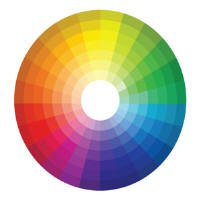
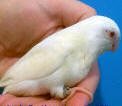
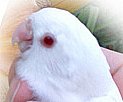 #3
#3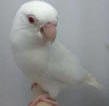

 #1
#1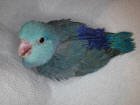



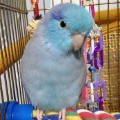

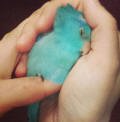
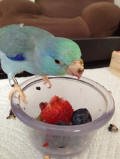

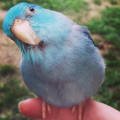

 #1
#1


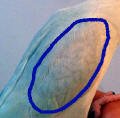







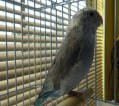





 #1
#1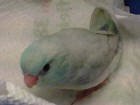






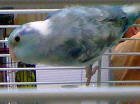
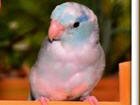










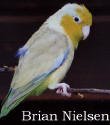












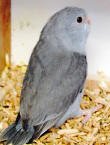
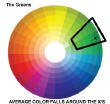
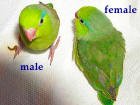



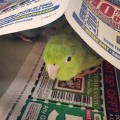
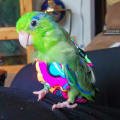

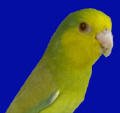
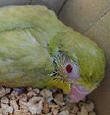 #2*
#2*






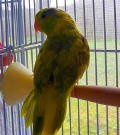




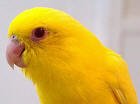
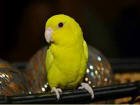




 #2
#2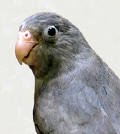
 #1
#1 



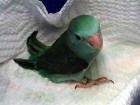
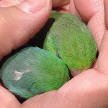
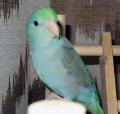
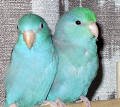







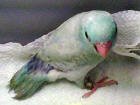



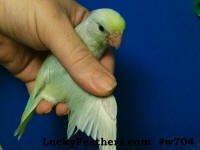









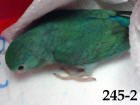





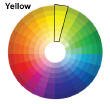
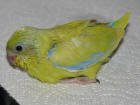




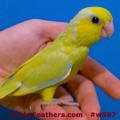
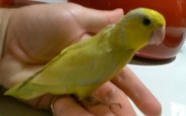
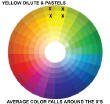
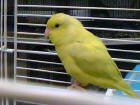


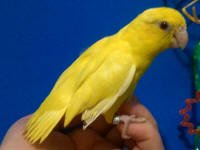




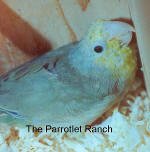



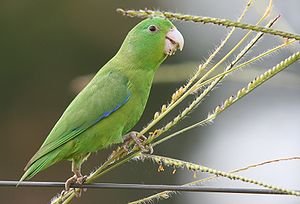
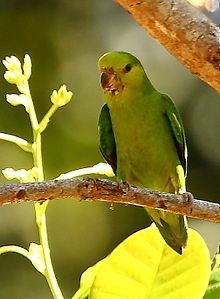
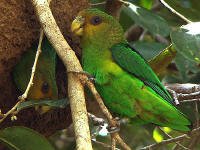 #2
#2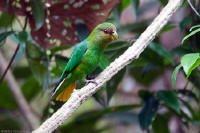
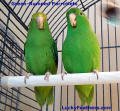
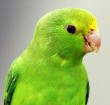
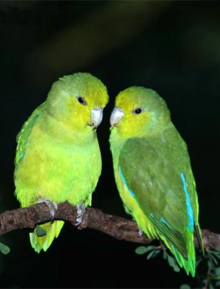
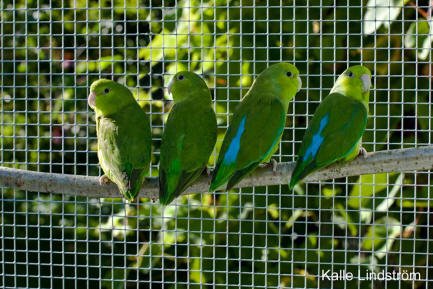
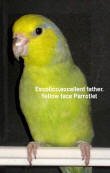 #2
#2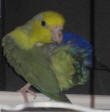 #3
#3
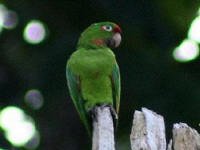
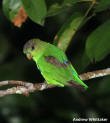

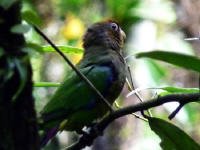
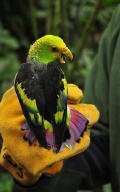
 Very rare species of parrotlet – A very few amount of breeders received permission to import 20 of these beautiful birds back in the 1990’s. From those breeders we do have a few available in different states – but they are very rare and super hard to find. I currently have a few pairs of these birds in my aviary set up to breed. At this time I am working with a handful of other breeders trading back and forth in order to get unrelated pairs for breeding. The very few babies that I have been able to sell or will have for sale in the future are already reserved in advance. Right now I estimate that the waiting time from my aviary would be about one year for a female or up to two years for a male.
Very rare species of parrotlet – A very few amount of breeders received permission to import 20 of these beautiful birds back in the 1990’s. From those breeders we do have a few available in different states – but they are very rare and super hard to find. I currently have a few pairs of these birds in my aviary set up to breed. At this time I am working with a handful of other breeders trading back and forth in order to get unrelated pairs for breeding. The very few babies that I have been able to sell or will have for sale in the future are already reserved in advance. Right now I estimate that the waiting time from my aviary would be about one year for a female or up to two years for a male.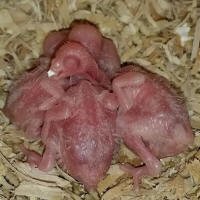
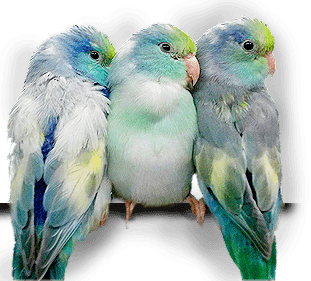 Parrotlets for Sale
Parrotlets for Sale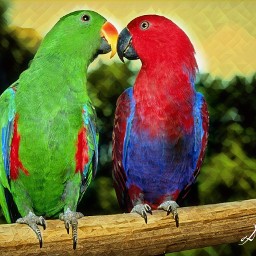 All Babies
All Babies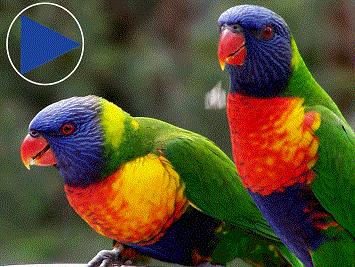 Parrotel Live Video
Parrotel Live Video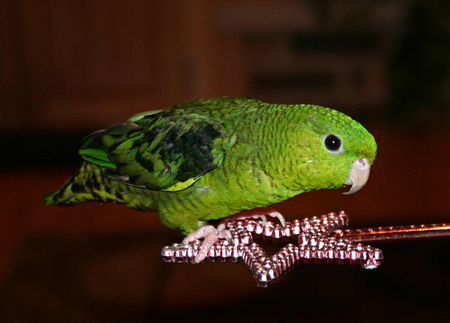 Lineolated Parakeets
Lineolated Parakeets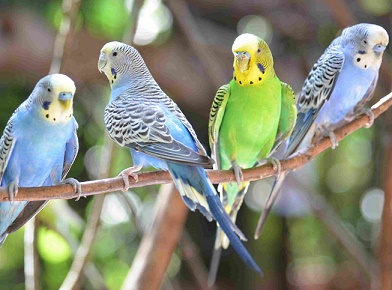 English Budgies
English Budgies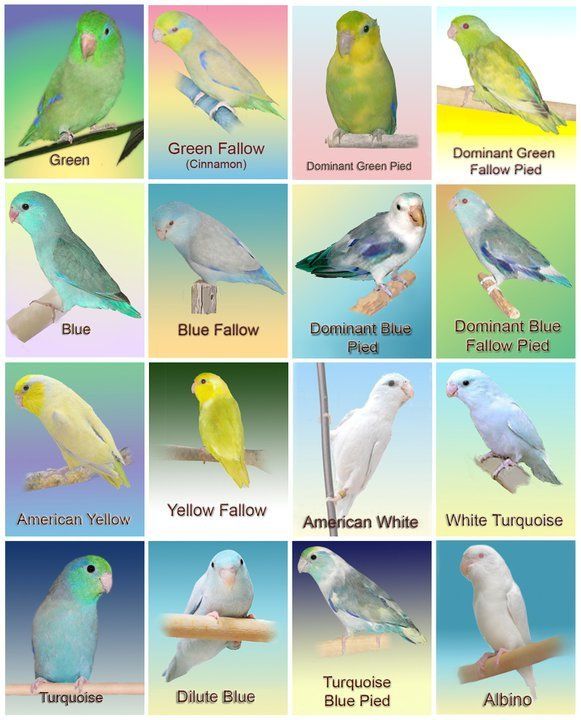 Parrotlet Color Mutations
Parrotlet Color Mutations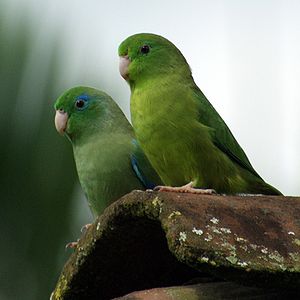 Spectacled Parrotlets
Spectacled Parrotlets